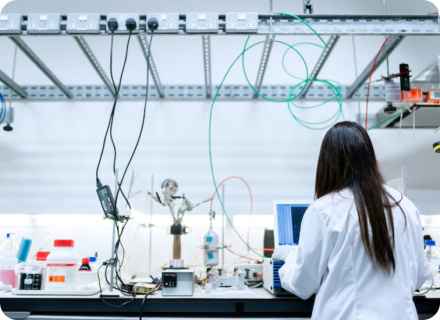After successfully eliminating the virus from its territory for many months, in May 2021, Taiwan faced a rapid resurgence in cases. The vaccine coverage rate was extremely low at that time. The health system was rapidly overwhelmed, and the case fatality rate reached one of the highest in the world. The alert level, after tremendous pressure from the public and the local governments, was finally raised to level 3, equivalent to only partial lockdown. After about 70 days, Taiwan has managed to take control of the spread and has returned to level 2 alert. The number of newly confirmed domestic cases was as low as six on August 4.
CP: Taiwan has for many months been considered a model for the entire world. It did a really great job of eliminating the virus from the island. How can you explain such great outcomes, as least until May 2021?
STC: Taiwan was expected to have the second highest number of imported cases, as it was so close to the epicentre of the first outbreak in Wuhan. If we’ve been able to handle things pretty well, it is because we learned our lesson in 2003 with SARS. We learned the importance of border control. We got the insight then that this kind of infection appears very similar to other common infections and wouldn’t be easy to diagnose early enough to prevent its spread, especially when people were infected in the community without a travel history. This possibility had not been considered in 2003 and the infection had spread to people who had not travelled off the island to the extent that very strict and rigorous controls were subsequently required. To prevent such troublesome community spread, strict and early border controls are essential. In addition, we developed standard procedures for contact tracing, quarantine, isolation and staff health monitoring along with mass masking in 2003.
So, in the first quarter of 2020, we were ready enough. In addition to implementing tough border controls, we knew there might already be some imported cases plus some hidden transmissions. The government integrated its national health insurance database with its immigration and customs database to facilitate the testing of symptomatic patients with a travel history, followed by isolation, thorough contact tracing and quarantine if confirmed.
In the community, we practised multi-level protections to avoid the spread of hidden infections, such as temperature check in all public places, health monitoring of students and workers, and the practice of universal personal precautions like masking, social distancing and hand hygiene. At first, many of these measures were not mandated. After cleaning up to zero, the government continued border controls with universal quarantine for all inbound passengers, and our people continued universal masking for self-protection. Studies have shown that these two measures together accounted for the continued success afterwards. Masking gradually became mandated in more and more places, especially after autumn of 2020.
During the year 2020, the numbers were absolutely incredible, whether the number of cases, with zero domestic cases for 253 days, from April to December, the number of deaths, or the strength of the economy. Taiwan was thus often praised as a model of pandemic management.
CP: What then could possibly go wrong? How was the virus able to find a way through the Taiwanese fortress?
STC: I will say it’s complacency that has overridden science and abuse of power that eroded governance. These led to leakage in border controls, absence of oversight on quarantine hotels and paralysis of the health system. It soon appeared that the command centre, instead of helping local governments and the health system cope with the dire situation, was making things more difficult and that the national plan was not ready for huge outbreaks.
Buoyed by its success in 2020, the Central Epidemic Command Center (CECC), responsible for managing the pandemic, did not realise that the task had been relatively easy at the time because there was only political gain to be had from closing borders to China. At the very beginning of the health crisis when China was the epicentre, the ruling party of our national government, the Democratic Progressive Party (DPP), famous for its strained relationship with China, didn’t have to hesitate a day in shutting down the border against China.
Things became trickier when the epicentre shifted to Japan, the US and Europe. That is when it was realized that the government was not pursuing a systematic elimination of the virus but was in fact pursuing a mitigation strategy, searching for a so-called “balance” between health and the economy. The central commander, head of the CEEC and minister of health and welfare, claimed that he preferred flexibility and dynamic adjustment, and would not like to be too radical or too invasive. Except for the border controls immediately decided against China, most decisions were made only when problems could not be ignored any more.
That is when we wasted our initial investment in granting entry to foreign individuals and groups without adequate quarantine measures. Early in December 2020, new cases were found in a Russian ballet troupe. In April, the central command gradually relaxed the length of quarantine for crew members down to three days (instead of 14) plus 11 days of self-monitoring. This led to outbreaks among crew members and their families, as well as among staff at a quarantine hotel. It rapidly spread to almost all counties and cities in Taiwan, with three cases on May 10, 29 cases on May 14, 180 the next day and 206 on Sunday. The peak was attained on May 22 with 723 domestic cases.
While weak points in border controls were noted, it was discovered that there had been a lack of sound management and oversight of quarantine hotels for months as well.
In addition, the Taiwanese testing strategy has shown clear limitations. The CECC and the ruling party strongly opposed mass testing because this has been seen as an iconic practice of China. For most of the health crisis, PCR tests have been the only type of tests allowed and available. And the policy has been to allow testing only when there is notification of a suspected case. However, these cases were limited, according to the central command, to those who were both symptomatic and considered at risk. The idea was to save on medical costs and “avoid pressure on the health system”. It has been challenged by the health department of Changhua County which, with the School of Public Health of National Taiwan University, was looking for epidemiological data and understanding of patterns of transmission and thus needed to test asymptomatic high-risk persons. But this effort was seen as a breach of public health policy and was condemned following an investigation, which put an end to any effort to prescribe tests that did not comply with the Central Epidemic Command Center policy. Because of this strong reluctance to test at a massive scale, there have been no data on the prevalence of infection until now. It is actually very difficult to express any disagreement with the CEEC. In January 2021, I dared to do so, posting a personal Facebook message describing the four pitfalls in its management of a hospital outbreak. For 10 straight days, I was the object of attacks on social networks and TV channels.
Such delays in detection led to spread on a massive scale that overwhelmed our healthcare sector. Many confirmed cases were left at home or placed in designated hotels without adequate medical support. More than 50% of deaths occurred before or within four days of diagnosis. The cumulative case fatality rate on July 25 was 5.05%, 2.4 times the world average, among the highest in the world in 2021.
CP: The number of cases declined to 10 on August 6. How has it been possible to regain control and not let things get out of hand?
STC: The answer is straightforward: it was because of continuous pressure from communities and local political determination. It was thanks to their efforts that testing became massive, contact tracing improved and the three-level alert was decided upon, along with school closures in many cities.
Public pressure has actually played a very strong role since the beginning. To give you an idea, while the government insisted at first that only sick people needed to wear masks, most Taiwanese insisted on wearing them anyway. In addition, when there were domestic cases, people spontaneously reduced their activities in public places, such as taking the metro, shopping or going to restaurants. Although workplaces and shops were never closed, the traffic flow was greatly reduced. On weekends, when most people did not have to go out to work, the streets and public places were almost empty. This was a kind of ‘voluntary containment’ practised spontaneously by people.
With the resurgence of the virus in May, local governments intensified their interventions beyond CECC’s policies by setting up numerous community resources in order to test people massively if they presented any doubt of contamination, even if they were asymptomatic, with the aim of detecting as many hidden cases as possible in the shortest possible time. The positive testing rate hit 11% in Taipei City. As traditional PCR testing was slow and inadequate, local governments used donated quick testing kits to speed up the testing, and hospitals were allowed to do universal testing for hospitalised patients and staff. For all confirmed cases, contact tracing and quarantine of contacts were done whenever possible.
As the outbreak intensified, pressure from the mayors of Taipei City, New Taipei, and many other counties and cities prompted the Central Epidemic Command Center to issue a Level 3 alert for the whole of Taiwan on 19 May. As case numbers continued to rise, the CECC finally ordered a strengthened level 3 alert which banned onsite dining in restaurants and unnecessary clusterings and which required universal masking outside households.
Universal testing is now accepted and applied to setting-related outbreaks such as dormitories, workplaces, traditional markets, etc. The CECC has also finally accepted our recommendation to do universal triple testing for all inbound passengers, 2 PCRs upon arrival and departure plus one quick test in between. We hope this will greatly improve the effectiveness of border controls, especially against the delta variant.
It is ingrained in public opinion that we cannot live with the virus. So that when our CECC hesitated, it got pushed by citizens working hard to rescue themselves and by local governments. Yet such is the sacred and inviolable authority of the CECC that citizens and local governments have found themselves having to describe their own efforts as “advance deployment” in support of the CECC’s work as a way of winning the central commander’s approval. Experts who have dared speak out against CECC policy have been under powerful attack from the ruling party.
CP: Once again, Taiwan has beaten the virus. Citizens and local governments seem to be ahead of the central government. How do you see the future?
STC: The one thing Taiwan is missing is that, despite appearances, our current national government never committed itself to Zero COVID, the central commander stating many times that it is not a realistic goal. Yet the analysis of the last 15 months shows very clearly that countries that pursue the elimination strategy are doing better economically. It is still a battle to be won, to commit the CECC to that strategy so that we won’t have to waste our future on prolonged and repetitive semi-lockdowns due to a yo-yo relapse effect by hidden transmissions.
CP: It is indeed surprising to observe that a tech-oriented country such as Taiwan is not vaccinating people as quickly as other countries such as Israel, the US or even France. How do you explain such a situation?
STC: Vaccines are crucial in order to win against the virus. They are such a powerful tool. However, vaccines are not only a technological tool. They are a political tool as well. Taiwan’s politicians have declared domestic vaccine development a national security issue to support extreme protectionism on this issue. The government, after turning down AZ’s invitation to manufacture, did not seek to purchase foreign vaccines either on a massive scale or early enough. It delayed, instead of speeding up, the proposals of three domestic civil organisations to obtain and donate Pfizer vaccine to the government. At the same time, claiming it was too difficult to get enough vaccine from abroad, the government approved the first domestic vaccine, with no phase 3 trial. So far, with vaccine donated by the US, Japan and other countries, about one-third of the population has received their first dose. The foreign vaccines were almost all used up now. Of the 12 million people currently booked in order to get their vaccines, only 8% accept the domestic vaccine compared to 90% Moderna and 65% Astra Zeneca. Here again, the performance in vaccination has been made possible by hard-working local governments and health systems in response to people who are strongly begging to be vaccinated. Such misalignment between the wishes of the people and our government has just cast more uncertainty over the future of our pandemic control.
Scientific evidence, medical technology and real-world best practices are all available. What our people need are the political decisions. Taiwan’s pandemic control is not any fairy tale to tell, instead, it resulted from a winding political struggle in which grass roots efforts barely surpassed the malfunctioning political power. The road is long and the struggle is going on. We have to convince the government of the superiority of the elimination strategy, to support the people, to denounce bad policies and to safeguard science.
Professor Shu-Ti Chiou was Taipei’s Commissioner of Health during the SARS epidemic in 2003. She headed the agency for health promotion under the ministry of health between 2009 and 2016. She then became President of the Health and Sustainable Development Foundation along with many other duties she still fulfills such as adjunct professor at the National Yang Ming Chiao Tung University in Taipei and Global Vice President for Capacity Building at the International Union for Health Promotion and Education. Since the beginning of the current health crisis, she has been advocating for the Zero COVID strategy and strongly believes that saving lives is a political decision that is not always shaped accordingly despite the overwhelming benefits.
Cécile Philippe is President of the Institut économique Molinari, a Franco-Belgian think tank that is actively following the health crisis. She holds a PhD in economics and recently published a study on COVID-19 available at https://www.institutmolinari.org/wp-content/uploads/sites/17/2021/03/etude-zero-covid2021_en.pdf She is a member of the World Health Network.
Translated and Edited for Clarity from L’Express article Vu de Taïwan : ‘La plupart des Taïwanais ont choisi de porter les masques en toute circonstance” published on 08/19/2021.


